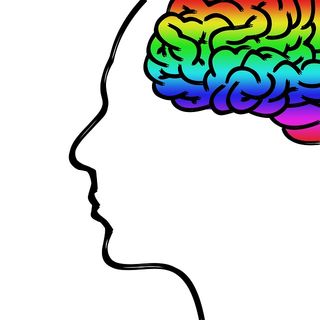When we feel depressed, we are more likely to get stuck in cycles of
repetitive ruminative thoughts that have a negative emotional tone. We
may regret the past, judge ourselves as unworthy or unlovable, blame
others for our problems, or anticipate a bleak future. These ruminative
cycles exacerbate feelings of sadness,
shame or
anger, and interfere with
motivation
to try to move on or actively solve problems. Depressive thought cycles
like these seem to be entrenched, and are very difficult to break, even
when we try to use logic to refute the
negative thinking. Ruminative thinking makes
depression worse and is even a predictor of subsequent depression in non-depressed people and of relapse in previously depressed people.
What Brain Processes Underly Depressive Rumination?
Recently, scientists at Stanford University have begun to uncover
what might be going on in our brains during depressive rumination.
A July 2015 study, “Depressive Rumination, the Default-Mode Network, and
the Dark Matter of Clinical
Neuroscience,” authored by J. Paul Hamilton and colleagues was published in the journal
Biological Psychiatry. This
study statistically combined several previous research studies using
meta-analytic tools and came to the conclusion that depressed people had
increased functional brain connections between two different brain
areas:
- The default mode network (DMN) and
- The subgenual prefrontal cortex (PFC)
The DMN is a part of the brain that is active when we
self-reflect, worry, daydream, or reminisce. It has been described as
facilitating a wakeful state of rest in which the mind naturally
wanders. The DMN refers to a network of interacting brain regions
including the posterior cingulate cortex (PCC), anterior cingulate
cortex (ACC), and ventral prefrontal cortex (PFC).
The subgenual PFC helps to direct the DMN towards reflecting on and
trying to solve the problems which the brain considers most pressing or
important for survival. This process can be functional if such
reflection actually leads to finding new answers or taking effective
action.
Source: Elisa Riva/Pixabay
In depression, the subgenual PFC seems to go haywire, hijacking
normal self-reflection into a state of mind that is negative,
self-focused, and withdrawn. In this state of mind, we continually
reflect on our problems in a repetitive, negatively-toned way, but are
de-motivated to actually engage with the world so as to solve those
problems. Depressed people tend to go on and on talking about themselves
and their problems, yet seem mentally stuck and unable to move forward.
The fact that they can’t just “snap out of it” is consistent with the
idea that a dysfunctional brain network may be involved in depressive
thinking.
What You Can Do to Combat Depressive, Ruminative Thinking
Try Transcranial Magnetic Imagining
Some preliminary research shows that this intervention may change abnormal functional connectivity within the DMN.
Deliberately Focus on a Task
It doesn’t matter whether it’s tidying your closets, doing the
laundry, or doing a crossword puzzle, getting an “on-task” focus can
de-activate the DMN and instead activate the “on-task” areas of the
brain.
Take a Walk in Nature
A 2015 study by Bratman and colleagues from Stanford University, published in the journal
Proceedings of the National Academy of Science found
that for healthy participants, a 90-minute walk in a natural setting,
decreased both ruminative thinking and neural activity in the subgenual
prefrontal cortex whereas a 90-minute walk in an urban setting had no
such effects on either rumination or neural activity. In other words,
walking in a natural
environment seems to open up your thinking in a way that lessens the grip of the faulty brain network.
Focus on Your Senses
Deliberately focusing your attention on what you are seeing, hearing,
feeling, sensing, or smelling right now, can help your brain get out of
an automatic mind-wandering state and de-activate the DMN. Instead, you
focus mindfully on your direct experience in the present moment, which
activates the “on-task” network.
Practice Meditation
Mindfulness
meditation is a practice that can teach you to gain control of the
focus of your attention—to be more aware of what you are thinking about
and able to redirect your focus. In one small study (Brewer et al.) that
scanned the brains of novice and experienced meditators, the
experienced meditators showed less DMN activation and reported less
mind-wandering during three different meditative activities (like
watching the breath or doing a compassion meditation).



